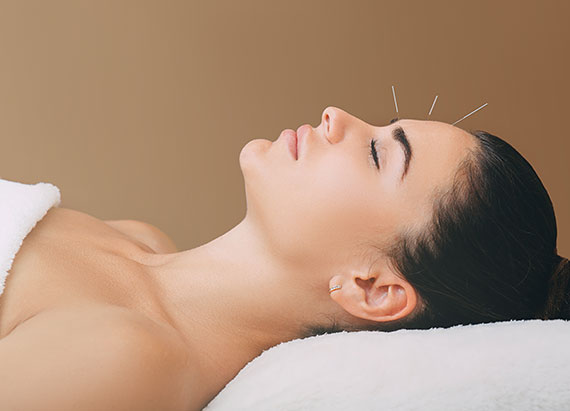
In Chinese Medicine, four aspects of a body that need to be functioning well to be healthy
If there is an obstruction in the blood flow to a particular area of the body, that area of the body will be negatively affected, resulting in disease or malfunction. Any area of the body that is damaged due to trauma or an internal disorder will have difficulty recovering if there is a reduction in blood flow to that area.
Vascular functioning decreases as we age and the body loses its ability to heal itself because all the healing agents of the body are found in the blood. Blood is not circulating sufficiently to the affected area. Acupuncture helps increase your vascular functioning and major symptoms will disappear
At the core of this ancient medicine is the philosophy that Qi (pronounced “chee”), or vital energy, flows throughout the body. Qi animates the body and protects it from illness, pain and disease. A person’s health is influenced by the quality, quantity and balance of Qi.
Qi flows through specific pathways called meridians. There are fourteen main meridians inside the body. The diagram to the left shows the meridian pathways in the body. Each of these is connected to specific organs and glands.

Meridian pathways are like rivers flowing inside the body. Where a river flows, it transports life-giving water that provides nourishment to the land, plants and people. Similarly, where meridian pathways flow, they bring life-giving Qi that provides nourishment to every cell, organ, gland, tissue and muscle in the body.
An obstruction to the flow of Qi is like a dam. When Qi becomes backed up in one part of the body, the flow becomes restricted in other parts. This blockage of the flow of Qi can be detrimental to a person’s health, cutting off vital nourishment to the body, organs and glands.
Physical and emotional trauma, stress, lack of exercise, overexertion, seasonal changes, poor diet, accidents, or excessive activity are among the many things that can influence the quality, quantity and balance of Qi.
Normally, when a blockage or imbalance occurs, the body easily bounces back, returning to a state of health and well-being. However, when this disruption is prolonged or excessive, or if the body is in a weakened state, illness, pain, or disease can set in.
Blockage of the flow of Qi can be detrimental to a person’s health and leads to various signs and symptoms or health concerns.
During the initial exam a full health history is taken. Questions are asked regarding health, symptoms and lifestyle. An appropriate physical exam is conducted, including pulse and tongue diagnosis.
Gathering this information enables the practitioner to effectively diagnose and detect any specific imbalances of Qi that may have contributed to a person’s health problems. The practitioner can then create a well-structured treatment plan.
Once the imbalances of Qi are detected, an acupuncturist will place fine, sterile needles at specific acupoints along meridian pathways. This safe and painless insertion of the needles can unblock the obstruction and balance Qi where it has become unbalanced. Once this is done, Qi can freely circulate throughout the body, providing adequate nourishment to cells, organs, glands, tissues and muscles. This can eliminate pain and restore balance and harmony, as well as the body’s ability to heal itself—ultimately leading to optimal health and well-being.
To feel pain, two nerves are involved:
They send signals to L5, Up the spine - Tract of Lissauer - Midbrain
Midbrain releases endorphins/enkephalins that bind to pain receptors along the spine and the capillary beds where the pain exists to reduce pain. In patients with chronic pain, the proprioceptive neural threshold is too low and the signal to midbrain is weak. The patient cannot pinpoint the EXACT location of pain and the midbrain does not release.

Minute tissue trauma activates blood coagulation system to produce bradykinin and plasmin. Bradykinin triggers local pain sensory fibers and corresponding proprioceptive nerves. Plasmin activates C3 triggering the immune complement system to sustain vasodilator phase by histamine, leukotrienes, prostaglandins, and kinin protease which sustains needling response. Inactivation phase breaks down histamine, releases cortisol, and promotes tissue healing.
Acupuncture creates a strong stimulation and “re-boots” the proprioceptive nerve pathway. The sensation created by the needles ‘jumps’ the neural signal threshold and stimulates the brain to release endorphins/enkephalins.
We continue needling and jumping the threshold until the body remembers and re-establishes the normal threshold to signal the brain.